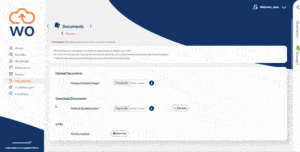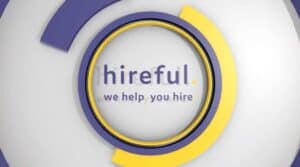When does a recruitment service stop and the employee onboarding process start?
It’s confusion and uncertainty over this transfer of responsibilities that causes so many problems during this crucial stage of the hiring process.
If you’re not careful, all of the hard work finding the right person for a role can be quickly undone as they enter a slow, inefficient and frustrating handover process,
For recruitment companies, the consequences can be costly with selected candidates dropping out, causing the loss of fees and damage done to long-term client relations.
Here’s a look at the problem:
What is the onboarding gap?
This refers to an administrative gap that typically exists between hiring teams and external recruiters. This becomes problematic when a candidate is selected and the onboarding process starts.
Onboarding typically begins the moment a successful candidate has been chosen and covers all of the tasks required to make sure they become a new starter. This includes:
- Contract/offer letters
- Policy/compliance agreements
- Reference/qualification checks
- Welcome packs and info
- First-day admin preparations
After having collected information and built trust with a candidate, this has to be transferred over to the HR department as the onboarding process begins.
What problems can the onboarding gap cause?
Inefficiency and confusion over responsibilities can create problems for all parties involved – recruiters, HR and the selected candidate.
Recruitment
Having found the right candidate and built confidence with them, this can all be quickly undone by a badly handled transition into onboarding. The worst-case scenario is that the person simply drops out of the process.
Depending on the agreement with the client, this can cause the loss of fees. It can also create more long term damage to client relations and questions about the quality of candidates provided.
Hiring teams
Delays, admin mix-ups and lost candidates are the potentially costly consequences on the onboarding gap for HR. It’s a particular problem when communications with recruitment are poor and there’s no clear transition process is in place.
Along with a greater risk of candidates dropping out, inefficiency can create a significant administrative burden for HR. Information collected during the recruitment will have to be manually entered into the hiring organisation’s systems.
Candidates
For the individual, the transfer from recruitment to HR can be a frustratingly slow and alienating experience. Having built familiarity with a recruiter, they find themselves with a completely new set of contacts.
After the excitement of accepting a new job, they can find themselves left in the dark for an extended period of time – sometimes weeks. It’s during this ‘in-between’ time that dropout is most likely to happen.
How can recruiters help to tackle the problem?
The starting point is to understand the issues faced and to explore with the client ways of helping to bridge the onboarding gap.
The bottom line is good communications, ensuring that everyone knows what’s happening and what they need to do. Traditionally, this has created logistical problems with emails, calls and documents having to be shared between HR, recruiters and candidates.
With cloud-based management tools now used to handle the onboarding process, a more collaborative approach is much easier to achieve with recruiters able to handle some of the tasks traditionally done by HR.
Webonboarding is designed to bridge the gap, allowing the transition to be easily managed. Everything is handled via an online portal with all parties involved able to see what their tasks and responsibilities are.
If you want more information on how to improve your onboarding services, book a call with our consultant from here.




